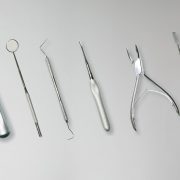Abstract
Ozone’s extremely strong oxidant capability, which oxidizes almost all surfaces to the most notable stage, has led to its long-standing use in the clinical sector. Since ozone is a gas, it can infiltrate even these difficult-to-reach tissues and places. It is used to increase circulation, stimulate oxygen metabolism, disrupt tumor metabolism, and eradicate pathogenic microbes. For more than a century, medical-grade ozone has been used as a non-pharmacological treatment. This blog aids in learning about the several dental treatment choices made possible by ozone therapy.
Introduction
Three oxygen atoms are converted by ultraviolet light to generate ozone (O3), a naturally occurring molecule. E. A. Fisch was the first dentist to employ ozone therapy in his office, as early as in the 1930s, to help with wound healing and disinfection during dental procedures.
Ozone functions as a potent oxidant with broad-spectrum antibacterial activity at low medical concentrations. It can also enhance healing processes and lower inflammation through protective antioxidant pathways, offering therapeutic benefits in the treatment of various disorders. It is safe when used by a professional at proper concentrations.
Ozone’s primary application in dentistry is based on its antibacterial qualities. ‘Six Ozone therapy’ is a flexible bio-oxidative treatment that uses oxygen or ozone dissolved in water or oil basis, or supplied by gas to achieve therapeutic effects. Since dental offices are constantly looking for novel ways to enhance oral health results, the use of ozone in dentistry is especially appealing. There is an urgent need to look at adjuvant therapies like ozone for more effective treatment and prevention techniques given the rising incidence of dental problems globally.
Mechanism Of Action
Ozone therapy has a wide range of applications in treating various diseases owing to its unique properties such as:
- Anti-Microbial Effect – Bacteria, viruses, fungus, yeast, and protozoa are all rendered inactive by ozone. By oxidizing phospholipids and lipoproteins, it compromises the integrity of the bacterial cell membrane. Bacterial cells, including their spores, can be rendered inactive by ozone at a low concentration of 0.1 parts per million.
O3 limits the proliferation of fungal cells at specific stages, with budding cells being the most vulnerable. By interfering with the virus-to-cell interaction through peroxidation, O3 destroys the viral capsid and disrupts the reproductive cycle.
- Stimulation Of Oxygen Metabolism- Red blood cell glycolysis increases as a result of ozone therapy. As a result, 2,3-diphosphoglycerate is stimulated and more oxygen is delivered into the tissues. By increasing pyruvate’s oxidative carboxylation and boosting ATP synthesis, ozone initiates the Krebs cycle.
Additionally, it significantly lowers NADH and aids in the oxidation of cytochrome C. Enzymes that scavenge free radicals and protect cell walls, such as glutathione peroxidase, catalase, and superoxide dismutase, as well as prostacycline, a vasodilator, are stimulated.
- Activation Of Immune System – The highest levels of interferon, tumor necrosis factor, and interleukin-2 are produced when ozone is delivered at concentrations between 30 and 55 lg/cc. This sets off a series of following immunological reactions. It does not alter dynamic or static pulmonary compliance or viscous or elastic work, but it dramatically raises mean and specific airway resistance.
Additionally, it dramatically lowers the maximum transpulmonary pressure. It also considerably lowers tidal volume and raises respiratory rate.
One molecule of ozone will kill the same number of bacteria that take 3,000–10,000 molecules of chlorine for the same effect. Ozone kills bacteria 3500 times faster than chlorine. This is the oxidizing impact of ozone!
Applications In Dentistry
Ozone generating device
- Dental Caries Management
- Ozone gas is used to kill cariogenic bacteria such as Streptococcus mutans and Lactobacillus in early carious lesions.
- It helps arrest and remineralize non-cavitated carious lesions by eliminating microbes and enhancing oxygenation of tissues, hence halting the spread of oral diseases.
- Endodontics
- Ozone (in gaseous, aqueous, or oil form) is used as an irrigant or disinfectant during root canal treatment during irrigation.
- The gas or aqueous forms can be used to eradicate biofilms and reduce the risk of re infection or failed root canals.
- Ozone therapy promotes faster healing of periapical tissues due to its oxygenating and biostimulatory effects.
- Ozone was seen as viable against disease-causing microorganisms such as Enterococcus faecalis, Candida albicans, Peptostreptococcus, and Pseudomonas aeruginosa.
- Periodontics
- Ozone therapy can be used as an adjunct to scaling and root planing for periodontal pocket disinfection as it controls oral disease-causing microorganisms in dental plaque.
- Ozonated water (4 mg/L) can be utilized as a pretreatment mouth rinse before performing scaling and root planing to reduce bacterial load in plaque biofilms, and pockets can be irrigated with it in nonsurgical curettage step.
- Ozonated water or gas helps reduce anaerobic bacterial counts and improve periodontal healing post surgical procedures.
- Oral Surgery
- Ozone aids in wound healing after extractions, biopsies, or implant placement.
- It improves local oxygen supply, stimulates angiogenesis, and accelerates epithelial regeneration.
- Reduces post-operative pain and inflammation.
- Prosthodontics
- It is used to disinfect dentures and eliminate Candida albicans in denture stomatitis.
- Ozonated water can be used to clean and sterilize prosthetic appliances without damaging materials.
- Literature suggests that it can also be used in management of peri-implantitis cases
- Esthetic Dentistry
- Ozone can enhance tooth whitening by oxidizing chromogenic compounds in enamel.
- It helps in bleaching procedures with minimal sensitivity.
- In addition, ozone also acts as a desentizing agent by acting on the exposed dentin by occluding the dentinal tubules.
- Pediatric Dentistry
- Non-invasive management of early childhood caries using ozone gas reduces the need for drilling and anesthesia which also helps in anxious or uncooperative children.
- Published literature evaluated the positive effect of pretreatment with ozone and sodium hypochlorite on pit and fissure sealant in primary molars.
- Oral Medicine
Ozone therapy is used for oral ulcers, herpes labialis, and mucositis, as it provides antimicrobial, analgesic, and healing effects.
- Implantology
- Used for implant surface decontamination before placement and for managing peri-implant infections.
- Literature supports that it enhances osseointegration due to improved local blood circulation.
- Infection Control
- Ozone water is used for disinfection of dental units, instruments, and suction lines, reducing cross-contamination risks.
- Enhancement of dental materials – can be used in combination with other materials to improve anti microbial properties and improve longevity of various restorative materials.
- Antimicrobial rinses
In cases of immuno compromised patients – ozone infused water or gas can be used to reduce oral bacterial load which improves overall hygiene.
Contraindications
As suggested in the literature review by Saini et al in 2011, contraindication to ozone therapy include- Pregnancy
- Autoimmune disorders
- Hyperthyroidism
- Anemia
- Myasthenia gravis
- Alcohol intoxication
- CVD
- Myocardial infarction
- Hemorrhage
- Ozone allergic reactions.
Ozone Toxicity
Even though ozone has certain benefits, the inhalation of ozone at times can be toxic to the pulmonary system and other organs.
The European cooperation of Medical Ozone Societies prohibited the intravenous injections of ozone gas due to the risk of air embolism. Complications caused by ozone therapy have not been very frequently reported. Few known side-effects include.
- Upper respiratory irritation
- Rhinitis
- Cough
- Headache
- Occasional nausea, vomiting
- Shortness of breath
- Poor circulation
- Heart problems.
In the event of ozone intoxication, the patient must be placed in supine position, should be made to inhale humid oxygen, and be administered ascorbic acid, Vitamin E, and n-acetylcysteine. Because of ozone’s highly oxidative power, all materials that come in contact with the gas must be ozone resistant, such as glass, silicon, and Teflon.
Conclusion
The ideal material for use in dental operations is ozone and unlike chlorinated products, it leaves no harmful residues after treating tissues and disinfects them. It accomplishes this by destroying harmful organisms by oxidizing their cell membranes. When it comes to preventing future decay and the need for dental care to repair bacterial damage, ozone treatment is a great option.
(Dr. Sudhir Dole from Navi Mumbai is the pioneer of ozone therapy in dentistry in India)
References
- Ozone therapy in dentistry– A literature review-Vats, Vrinda; Dhall, Sonam1; Sachdeva, Akshat-Journal of Oral Research and Review 14(1):p 84-87, Jan–Jun 2022. | DOI: 4103/jorr.jorr_39_21
- Ozone therapy in dentistry: A strategic review-Rajiv Saini
- Dental applications of ozone therapy: A review of literature Sansriti Tiwari a, *, Alok Avinash a , Shashank Katiyar b , A. Aarthi Iyer c , Suyog Jain d
- Efcacy of ozone therapy in dentistry with approach of healing, pain management, and therapeutic outcomes: a systematic review of clinical trials Maryam Rezaeianjam1 , Aynaz Khabazian2 , Tanaz Khabazian2 , Fatemeh Ghorbani3 , Tayebeh Abbasi4 , Shima Asghari5 , Fatemeh Heidari6 , Aida Shiri7 and Maziar Naderi8
- Ozone Therapy In Dentistry: An Overview Of The Biological Mechanisms Involved (Review) Federica Veneri1,2, Tommaso Filippini3,4, Ugo Consolo1 , Marco Vinceti3,5 And Luigi Generali
- Ozone therapy in dentistry – T.Manigandan1, SP. Mangaiyarkarasi2, R. Hemalatha2, VT. Hemalatha1 and N.P.Murali3, BIOSCIENCES BIOTECHNOLOGY RESEARCH ASIA, 2012;9(2)





















Comments